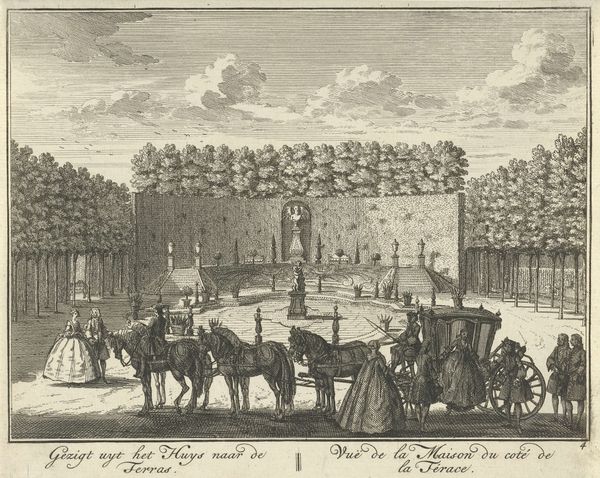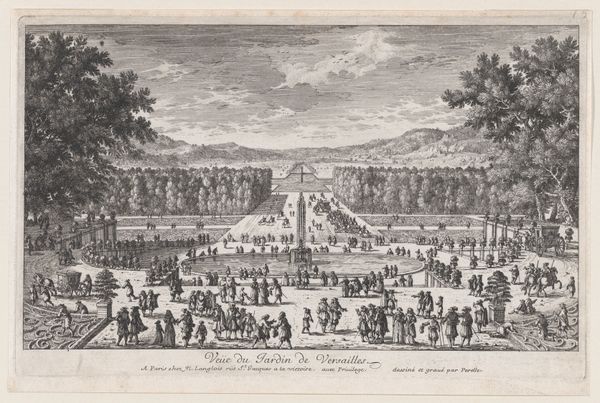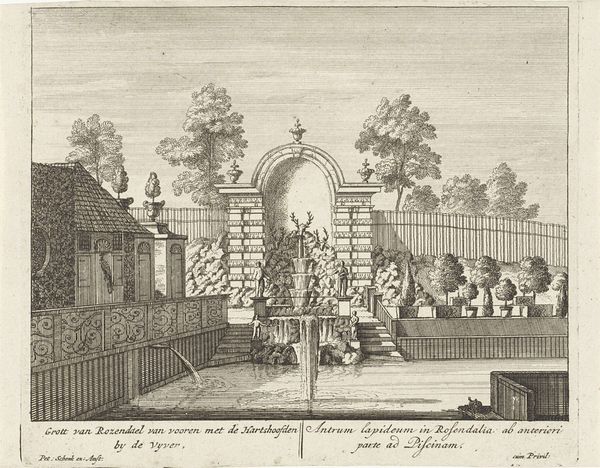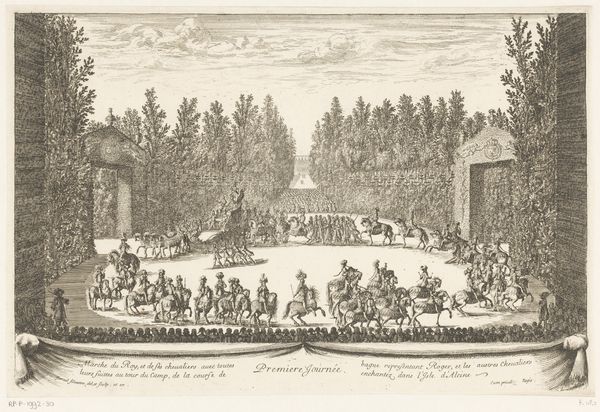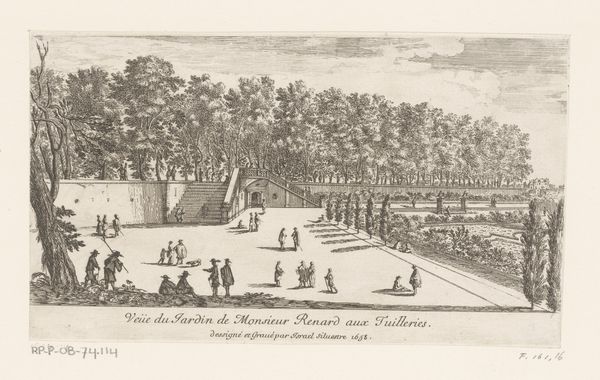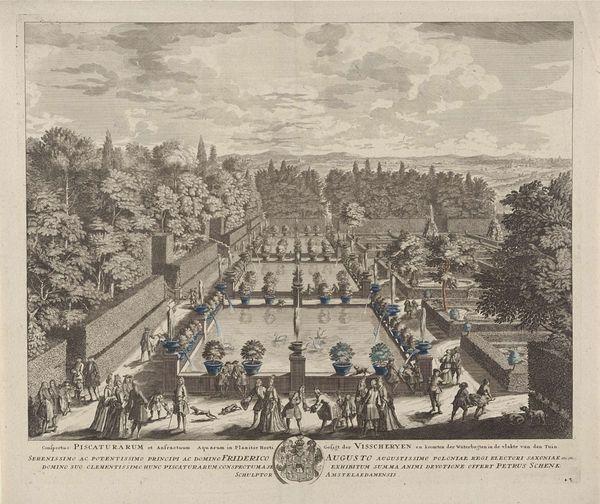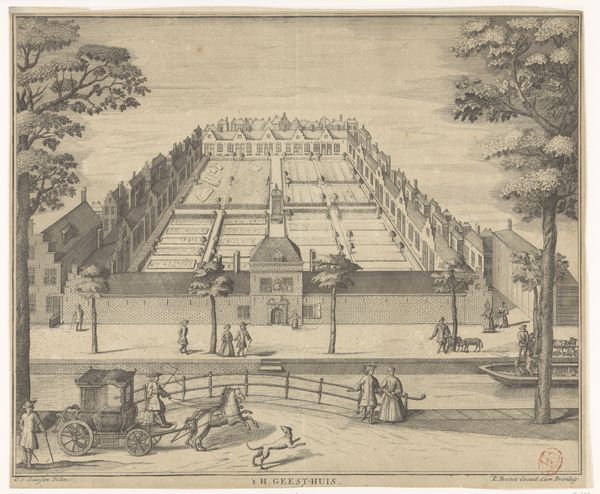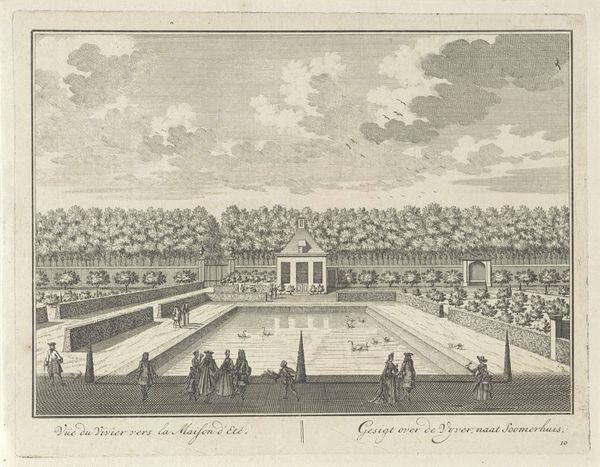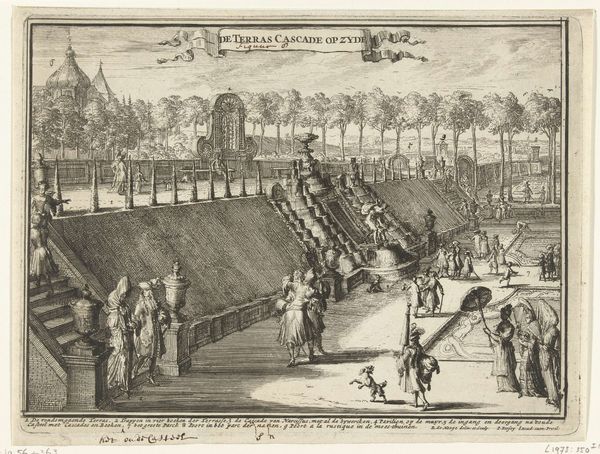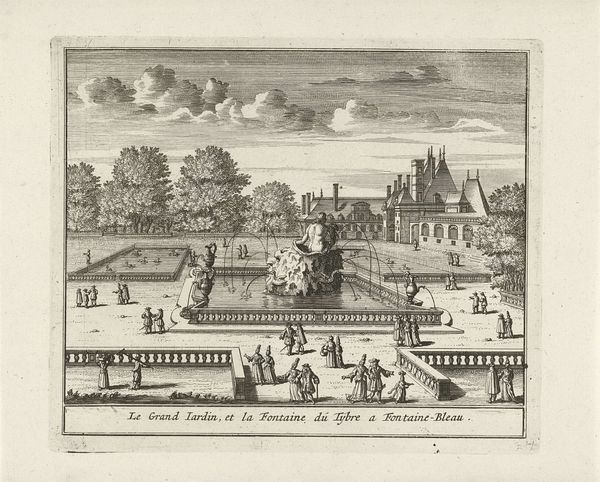
engraving
#
baroque
#
pen illustration
#
old engraving style
#
landscape
#
cityscape
#
engraving
Dimensions: height 169 mm, width 200 mm
Copyright: Rijks Museum: Open Domain
Editor: So, here we have an engraving entitled "Fontein in de tuin van Kasteel Rosendael," made sometime between 1675 and 1711 by an anonymous artist. It depicts a garden fountain and the mood is quite formal, almost staged. What historical contexts inform how we understand this artwork? Curator: Well, this image offers a window into the Dutch Baroque aesthetic and the socio-political landscape of the time. Grand gardens like Rosendael served as statements of wealth and power for aristocratic families. What details strike you about how that power is presented? Editor: The formality, I suppose. The very structured layout and the way the figures seem posed. Also the clear class divisions represented, the leisure classes being entertained by what could be garden designers. Curator: Precisely. These gardens were carefully constructed to display control over nature, a visual manifestation of their dominance. Consider also the role of perspective in this engraving – where is the focal point? Editor: Definitely the fountain and the implied vanishing point leads towards the statue in the background. The artist uses these design elements to draw attention and make a point. Curator: Yes, note how the fountain becomes the center of activity and the ideal viewpoint. Do you think this idealized representation accurately reflected the reality of garden life at Rosendael? Or was it more aspirational? Editor: Aspirational, definitely. It omits any sign of labor or the costs of maintaining such a place. I think I better understand how art and the design of gardens could be used to cement social positions at that time. Curator: It's about understanding how imagery participates in shaping perceptions and solidifying power structures. Examining art this way provides unique insight into history.
Comments
No comments
Be the first to comment and join the conversation on the ultimate creative platform.
